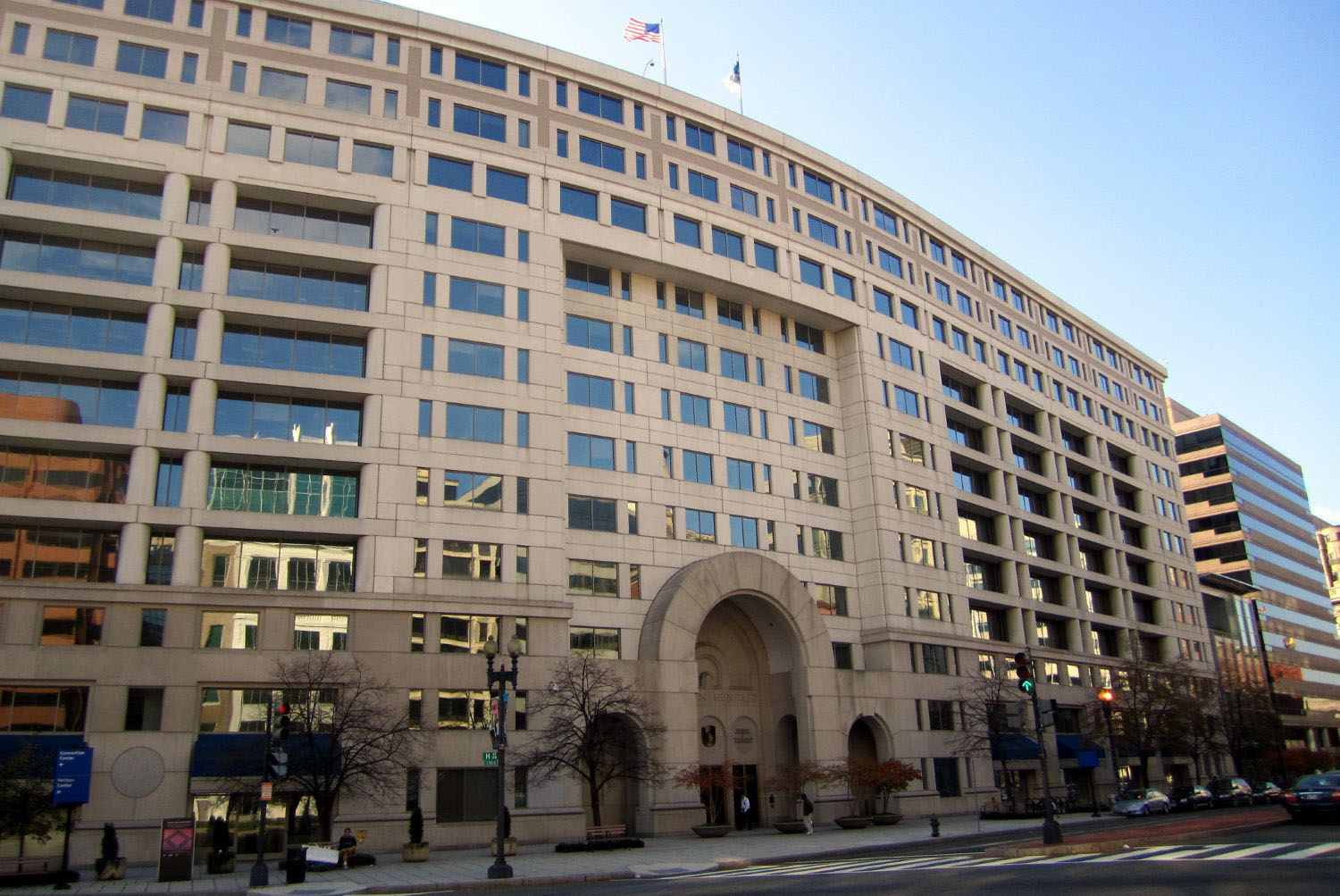Toward the end of the 2008 global economic crisis, the consensus was that developed economies would recover just as quickly as they did in past recessions. It was also expected that emerging market economies would continue acting as the world growth locomotive for a relatively long time. Until mid-2011, this perspective appeared to be in the process of materializing. By now, however, this scenario differs significantly from reality.
As a result, the consensus among international analysts has, therefore, become increasingly pessimistic. In the case of developed economies, the slow recovery has even led some experts to suggest the possibility of entering into a secular stagnation process. In Latin America, the economic slowdown has reverted growth rates towards potential rates similar to historical averages following a strong expansionary period. Between 2009 and 2013, the region benefited from the aggressive response to the 2008 crisis by advanced economies’ central banks (particularly the Fed) and the strong countercyclical policy in China. Nowadays, part of Latin America’s slowdown is clearly cyclical. After the boom in commodity prices, there was a strong increase in investments related to these industries, which is now coming to an end.
These developments are of special interest to the Latin American Shadow Financial Regulatory Committee (CLAAF for its Spanish name), a group of leading experts on Latin American economics that I (Liliana) chair. In the latest CLAAF statement, the committee identified two additional risk factors that have not been appropriately internalized by the current consensus. The first is that asset liquidity might fall significantly when the Fed increases interest rates, a move the market has started to anticipate. This fall in asset liquidity might drastically reduce emerging markets’ external funding. The second is that there are indications that a slowdown in China’s economic growth will be deeper than what is forecasted by the current international consensus. The committee also identified an additional risk factor resulting from a larger fall in commodity prices than anticipated by consensus estimates.
Committee members find that Latin America is less able now to face to risks than it was in 2008. There are a number of reasons:
- Excessive public and private expenditure and insufficient savings ratios led to a deterioration of current account balances even before the recent decline in commodities prices.
- Public-sector deficits increased significantly in several countries, including those where countercyclical fiscal policies adopted in 2009 were not reverted during the subsequent recovery.
- Domestic costs of production increased faster than productivity, reducing competitiveness in non-commodity tradable industries.
- Indebtedness levels of firms and families are relatively high in several countries.
- Efforts for increasing productivity in the region have clearly been insufficient.
The risks from the global scenario described above have a clearly systemic dimension. In this context, CLAAF believes that it is desirable to strengthen the international financial architecture to improve its capability to respond to a sudden deterioration in global financial markets. In particular, the committee recommends the following:
- The creation of an Emerging Markets Fund (EMF) with the capacity to intervene in sovereign debt markets for the purpose of reducing volatility. Such a fund may intervene in debt markets in case of systemic financial turmoil and under predetermined rules.
- To complement the role of current multilateral organizations, particularly the IMF, through the creation of regional institutions. In this regard, the Committee favors the creation of a Latin American Liquidity Fund mainly aiming at (1) providing liquidity to the public sector and (2) providing credit that can mitigate the possible volatility in trade credit lines. The committee estimated that such institutions should need a capitalization of US$ 50 billion and a lending capacity of US$ 100 billion, equivalent to the net liquidity needs by the region during the 2008–09 crisis (this recommendation has been previously stated by the committee in its Statement No. 27).
- That countries in the region run new stress tests in order to update possible financial needs for the public and private sectors that might arise if the Fed increases interest rates suddenly.
- To keep appropriate exchange rate flexibility and avoiding “fear to float” behaviors. The countries that are most able to reduce currency mismatches in balance sheets and dollarization will be better positioned to face the challenges of a greater financial volatility and lower economic growth.
This and previous CLAAF statements are available in English and Spanish. You can also click here to watch an interview (in Spanish) with Liliana about the latest CLAAF meeting in Lima, Peru.
Hacia fines de la crisis de 2008, era común suponer que las economías avanzadas habrían de recuperarse de manera similar a como lo había hecho tras otras épocas recesivas en el pasado, mientras que se esperaba que las economías emergentes actuarían como la locomotora del crecimiento mundial por un periodo relativamente largo de tiempo. Hasta mediados de 2011, esta perspectiva parecía que iba a concretarse. Sin embargo, lo efectivamente observado difiere en grado relativamente importante respecto de ese escenario.
Actualmente, el sentimiento generalizado entre los observadores de la economía internacional es crecientemente pesimista. En el caso de las economías avanzadas, la lentitud del proceso de recuperación ha incluso llevado a algunos a sugerir la posibilidad de que estarían entrando en un proceso de estancamiento secular. En América Latina, una consecuencia de la desaceleración económica es que las tasas de crecimiento de la región están revirtiendo hacia tasas potenciales similares a su promedio histórico tras un período de fuerte expansión. En el período 2009-2013, la región se vio beneficiada por la respuesta extremadamente expansiva de los bancos centrales del mundo avanzado, en particular la FED, a la crisis del 2008, y por la fuerte política anticíclica implementada en China. Ahora, en contraste, parte de la desaceleración de la región es claramente cíclica ya que, tras el boom en el precio de las materias primas, existió un fuerte aumento en la inversión asociada a estos sectores que ahora está concluyendo.
Esta sucesión de eventos es de especial interés para el Comité Latinoamericano de Asuntos Financieros (CLAAF), un grupo de los economistas más influyentes de América Latina, el cual presido actualmente. En la última declaración de CLAAF, el comité identifica dos factores adicionales de riesgo global que no han sido internalizados adecuadamente por el consenso actual. El primero es que la liquidez de los activos de los emergentes podría ser altamente susceptible a una fuerte caída cuando suban las tasas de interés de la FED. Esta disminución de la liquidez podría verse reflejada en una reducción drástica en las fuentes de financiamiento externo de los países emergentes. El segundo es que existen razones de peso por las cuales China podría estar enfrentando una desaceleración mucho más significativa en su crecimiento de la que surge del consenso actual. El comité también identifica un factor adicional de riesgo regional, que es la posibilidad de que los precios de las materias primas se reduzcan de manera más rápida de lo que el consenso actual internaliza.
Estos riesgos adicionales que el comité ha identificado encuentran a América Latina en condiciones iniciales más frágiles que las que existían en el 2008, debido a las siguientes razones:
- El exceso de gasto público y/o privado y un nivel insuficiente de ahorro llevó a un deterioro de los saldos de cuenta corriente, aún antes de que disminuyeran los precios de las materias primas.
- El déficit fiscal ha aumentado en varios países, incluyendo aquellos en los que las políticas anticíclicas adoptadas en el 2009 no se revertieron.
- Los costos domésticos de producción crecieron más rápidamente que la productividad, reduciendo la competitividad de los sectores transables no productores de materias primas.
- Los niveles de endeudamiento de las empresas y familias son relativamente altos en varios países.
- Los esfuerzos por aumentar la productividad en la región han sido claramente insuficientes.
Los riesgos del escenario global descrito anteriormente tienen una dimensión claramente sistémica. En ese contexto, la visión de CLAAF es que es deseable avanzar decididamente hacia un mayor fortalecimiento de la arquitectura financiera internacional en cuanto a su capacidad de responder a un deterioro repentino en el contexto financiero global. En particular, el comité recomienda:
- La creación de un Fondo para Mercados Emergentes (FME) con capacidad de intervenir en los mercados de deuda soberana con el fin de contribuir a reducir la volatilidad de los precios de dichos activos. Dicho Fondo podría intervenir en los mercados de deuda en situaciones de turbulencia financiera sistémica y bajo reglas predeterminadas.
- Complementar el rol de las instituciones multilaterales actuales, en particular el FMI, mediante la creación de un Fondo Latino Americano de Liquidez con dos funciones principales (1) la provisión de liquidez al sector público y (2) la provisión de préstamos para mitigar la posible volatilidad en las líneas de comercio exterior. El comité estimó que dicha institución debía contar con un objetivo de capital de USD 50 billones y una capacidad prestable de USD 100 billones, equivalente a la necesidad neta de liquidez de la región durante la crisis de 2008-2009 (esta recomendación también se encuentra en la declaración de CLAAF No. 27).
- A los países de la región, realizar nuevos stress tests que permitan actualizar las posibles necesidades de financiamiento de los sectores público y privado asociadas con un repentino incremento en las tasas de interés internacionales en un contexto de desaceleración económica y caída de precios internacionales de materias primas.
- Mantener una adecuada flexibilidad cambiaria y evitar comportamientos del tipo “miedo a flotar”. Los países que logren reducir al máximo los descalces cambiarios en las hojas de balance y la dolarización estarán en mejores condiciones para enfrentar los desafíos de una mayor volatilidad financiera y un menor crecimiento económico.
Ésta y todas las declaraciones anteriores del CLAAF están disponibles en español e inglés. También puede hacer clic aquí para ver la entrevista a Liliana acerca de la última reunión de CLAAF en Lima-Perú.
Disclaimer
CGD blog posts reflect the views of the authors, drawing on prior research and experience in their areas of expertise. CGD is a nonpartisan, independent organization and does not take institutional positions.





